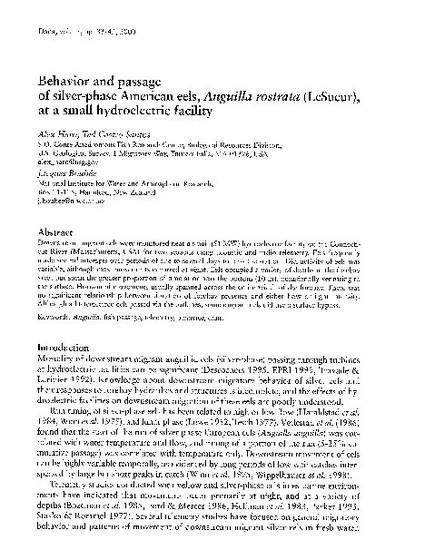
Downstream migrant eels were monitored near a small (51 MW) hydroelectric facility on the Connecticut River (Massachusetts, USA) for two seasons using acoustic and radio telemetry. Eels frequently made several attempts over periods of one to several days to pass the station. Diel activity of eels was variable, although most movements occurred at night. Eels occupied a variety of depths in the forebay area, but spent the greater proportion of time at or near the bottom (10 m), occasionally venturing to the surface. Horizontal movements usually spanned across the entire width of the forebay. There was no significant relationship between duration of forebay presence and either flow or light intensity. Although all telemetered eels passed via the turbines, some migrant eels did use a surface bypass.
- Anguilla,
- fish passage,
- telemetry,
- behavioir,
- dam
Available at: http://works.bepress.com/alex_haro/1/
